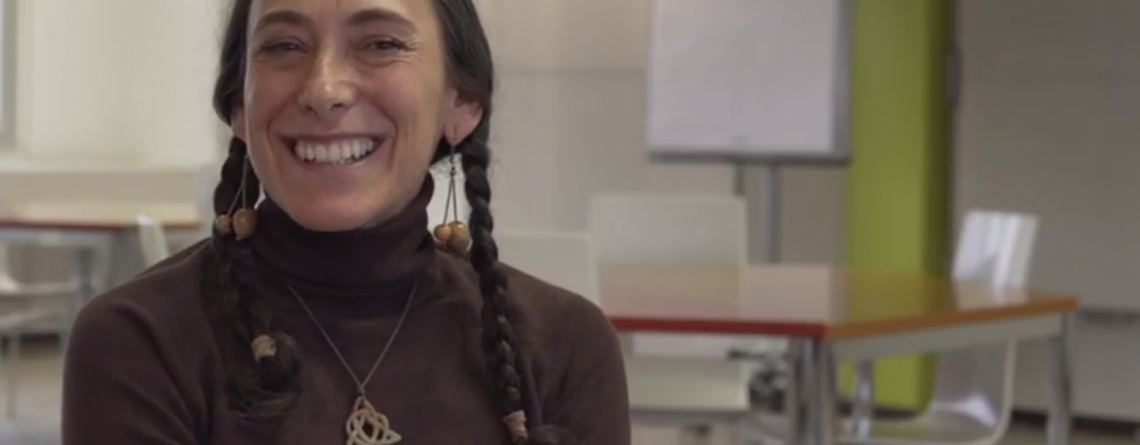
Liderando el cambio más allá de la sostenibilidad
septiembre 29, 2020
La UMA en el mundo
septiembre 29, 2020Fuente: RADAR – A KAOSPILOT MAGAZINE

RADAR -Im in conversation with a friend recently as she tells me about her housemates, who have for months debated the need for a better coffee system in their shared kitchen. Their coffee machine is broken. My frustration mounts as I listen, wondering why, instead of spending time talking about it, they haven’t just bought a new coffee machine?
I can’t help but think, beyond coffee machines, how many ideas are never acted on, how many words spoken are never matched with action, and how many attempts at producing something never make it to an audience? Consider for moment how much time we spend sitting in meetings — time spent thinking about, talking about and planning action, instead of just doing it.
Planning is important. Planning is at times also entirely necessary. So is attention to the finer details. But when does planning and detail orientedness become overkill, and merely a way to procrastinate on or forgo the action altogether?
The only purpose of starting is to finish, and while the projects we do are never really finished, they must ship. – Seth Godin
I’ll admit I’m guilty of it. I regularly sit in on (or worse, host) meetings that result in a lot of talk and very little action. I can also find myself forever refining an email or article before releasing it. Or else, putting it off for later, often meaning never. Experience tells me the work doesn’t get better with overwork. Suppose there’s that tiny typo or a sentence that could have been worded differently. There is a better chance of success if I release something imperfect than if I release nothing at all.
Nike may have got it right with the catchphrase “Just Do It”, but is it that simple?
Things take the time you give them.
Maybe the biggest problem standing in the way of our making moves is the modern luxury of having too much time to think. If given the chance, we overwork things: endlessly editing, refining, tweaking. It’s possible that an equal amount of creative genius could come out of three hours of work, that would equally, if given the time, come out of three days worth of work. Parkinson’s law is the adage that “work expands so as to fill the time available for its completion”.
Consider the concept of Startup Weekend, where people come together to build and launch businesses in just 54 hours. The premise of Startup Weekend is simply to gather enough information to get out of the building in order to test a concept or idea. Once tested, you return to the drawing board with your newfound insights, aware of how to tweak your idea and what further information you now need. At the end of the 54 hours, you have a tested and tangible prototype that is possible to iterate on instead of trying to get it right the first time. More time doesn’t by default equal a better end result. Entrepreneurs can spend a year building something before knowing they have a first customer. Alternatively, you can in just 54 hours, prototype of a concept built from the inputs of your intended first customers.
Behind every flinch is a fear or an anxiety – sometimes rational, sometimes not. Without the fear, there is no flinch. But wiping out the fear isn’t what’s important – facing it is. – Julien Smith
Crush the flinch.
If it’s not too much time, it’s too much thinking that gets in the way of my hitting send or pressing publish, stopping me from producing and releasing works into the world. A flinch is something beneath the surface of our inaction. A flinch could be “who am I to write this article?”. There’s something about the action I perceive as dangerous, difficult or unpleasant and therefore shy away from. Likely it’s tapping into my greatest doubts, fears and insecurities, and so the action is halted. My task, when I’m stuck in a project, is to identify the flinch (the thing getting in the way of my moving forward) and to crush it.
Author Julien Smith who wrote The Flinch says that “Behind every flinch is a fear or an anxiety – sometimes rational, sometimes not. Without the fear, there is no flinch. But wiping out the fear isn’t what’s important – facing it is.” Maybe the thing I’m working on will never be fully ready, or it’s the case that I will never feel fully ready. Either way, facing and ultimately crushing the flinch moves me one step closer to taking the action.
In the words of Seth Godin, “SHIP”.
“The only purpose of starting is to finish, and while the projects we do are never really finished, they must ship.” says marketing guru, Seth Godin, in his bestselling book Linchpin. What if we were more willing to fail? To put works out before they were perfect and to truly learn by doing? What if we got more comfortable in releasing work before it feels finished? Ideas and projects die at the hands of people who think just one more tweak, one more proofread, one more change is needed before putting that project out into the world.
We grow a belief in our ability to do something by doing it. A CEO doesn’t know how to be a CEO until they are one. I don’t get confident as a writer unless I write. So sure, I might not feel the most confidently about something I’ve never done before, naturally, but I get confidence by shipping. Better to leap into the unknown with shaky legs the first few times, than to not go there at all. Momentum comes from motion and the action, in the end, rarely ends up being the daunting task my mind makes it out to be.
The next time you come up against yourself in the quest to hit send, publish, or whatever it may be, get out of your own way and Just Do It – set the time frame, crush the flinch and then SHIP. What makes something truly intriguing is its imperfection, the mark that it has come from an imperfect human. Let it be less about getting it right and more about getting it done.

